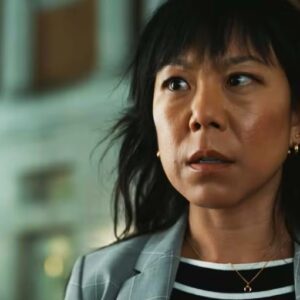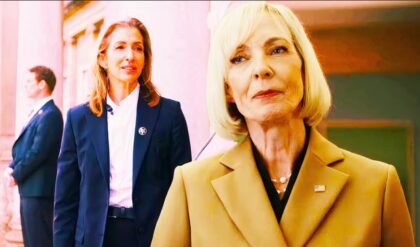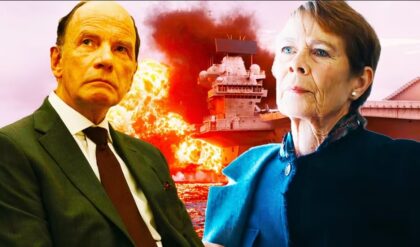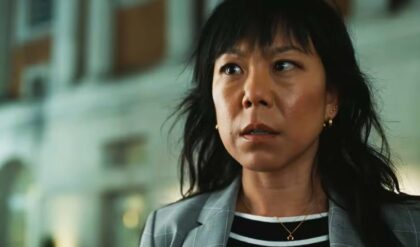Balrogs are some of The Lord of the Rings‘ most iconic monsters, so it is no surprise that they have been part of Prime Video’s The Lord of the Rings: The Rings of Power. A Balrog appeared briefly in Gil-galad’s story about the creation of mithril, but the more significant Balrog was the one that lay deep beneath the Mines of Moria. The first season teased this Balrog’s awakening when a leaf from the Elves’ Great Tree fell to its resting place, and ever since, fans have been eagerly awaiting the moment it made itself known to the Dwarves. That moment finally came in the finale of the second season. King Durin III, spurred on by the greed that his Ring of Power instilled within him, accidentally released the Balrog while mining for ore. The series took some creative liberties with the lore of the Balrog, but it perfectly portrayed one aspect of J. R. R. Tolkien’s The Lord of the Rings novel that even Peter Jackson’s film adaptations did not.
Whether Balrogs were meant to have wings has long been a hotly debated topic among The Lord of the Rings fans. Tolkien made two allusions to Balrog wings in the chapter “The Bridge of Khazad-dûm” from The Fellowship of the Ring. First, he stated that “the shadow about [the Balrog] reached out like two vast wings,” and shortly after that, he mentioned that “its wings were spread from wall to wall.” Some readers take the second quote at face value, believing that the Balrog had literal wings that spanned the width of the room. Others believe that this was simply a continuation of the simile in the first quote, which referred to the darkness around the Balrog as wings. Both could be true at once; it could have actual wings while also casting winglike shadows, especially since the Balrog’s body was made of darkness and fire. But when adapting Tolkien’s stories, artists need to decide the nature of Balrogs’ wings.
The Rings of Power Brought Tolkien’s Words to Life
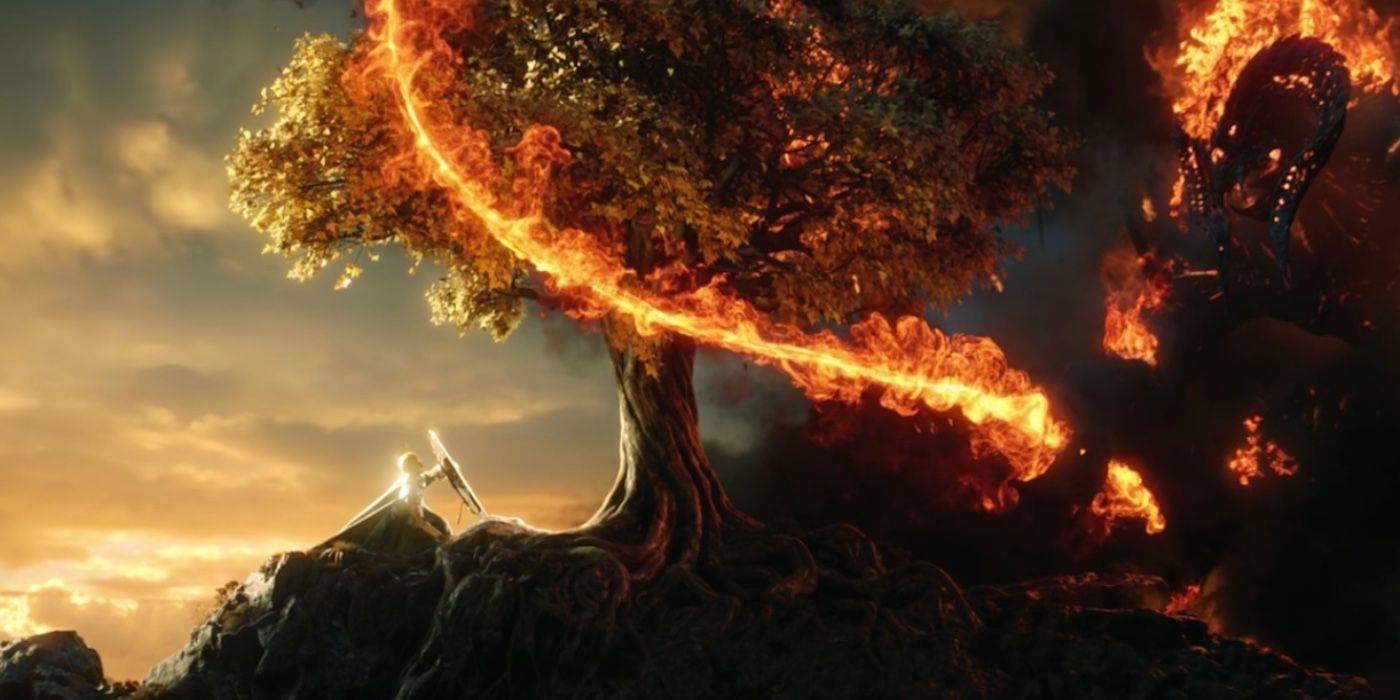
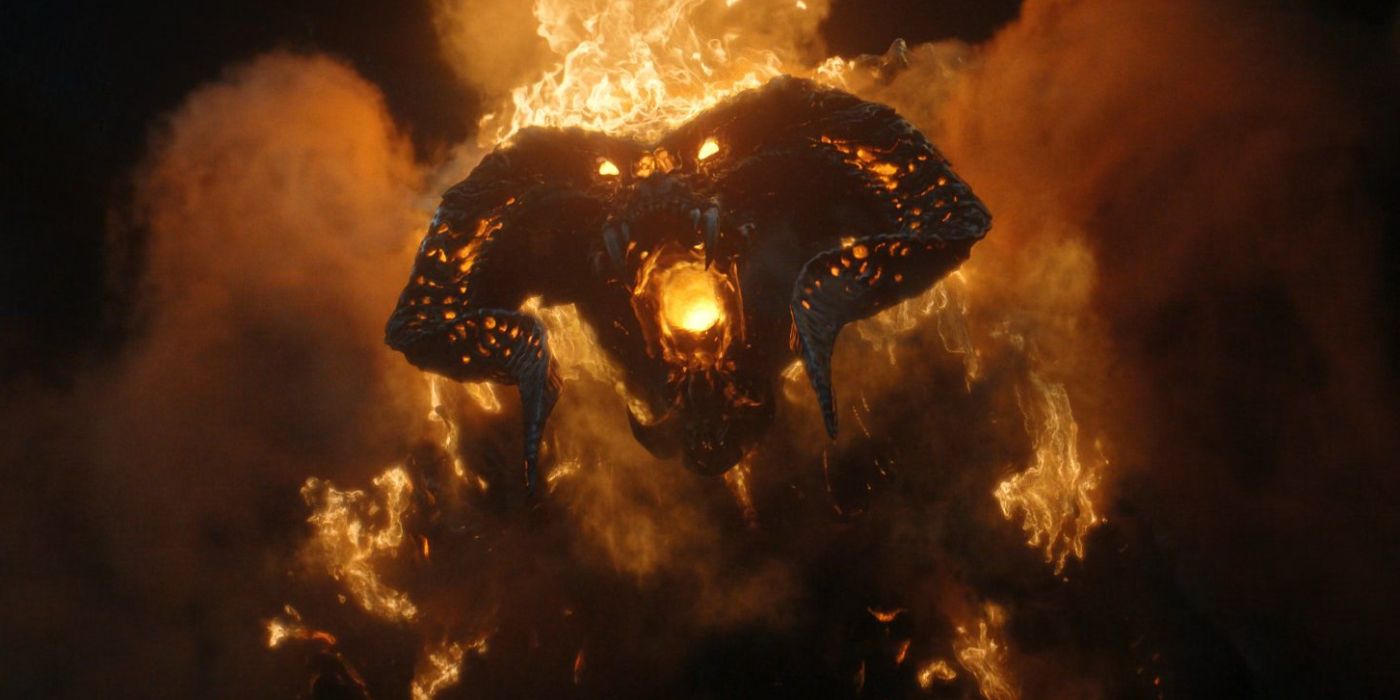
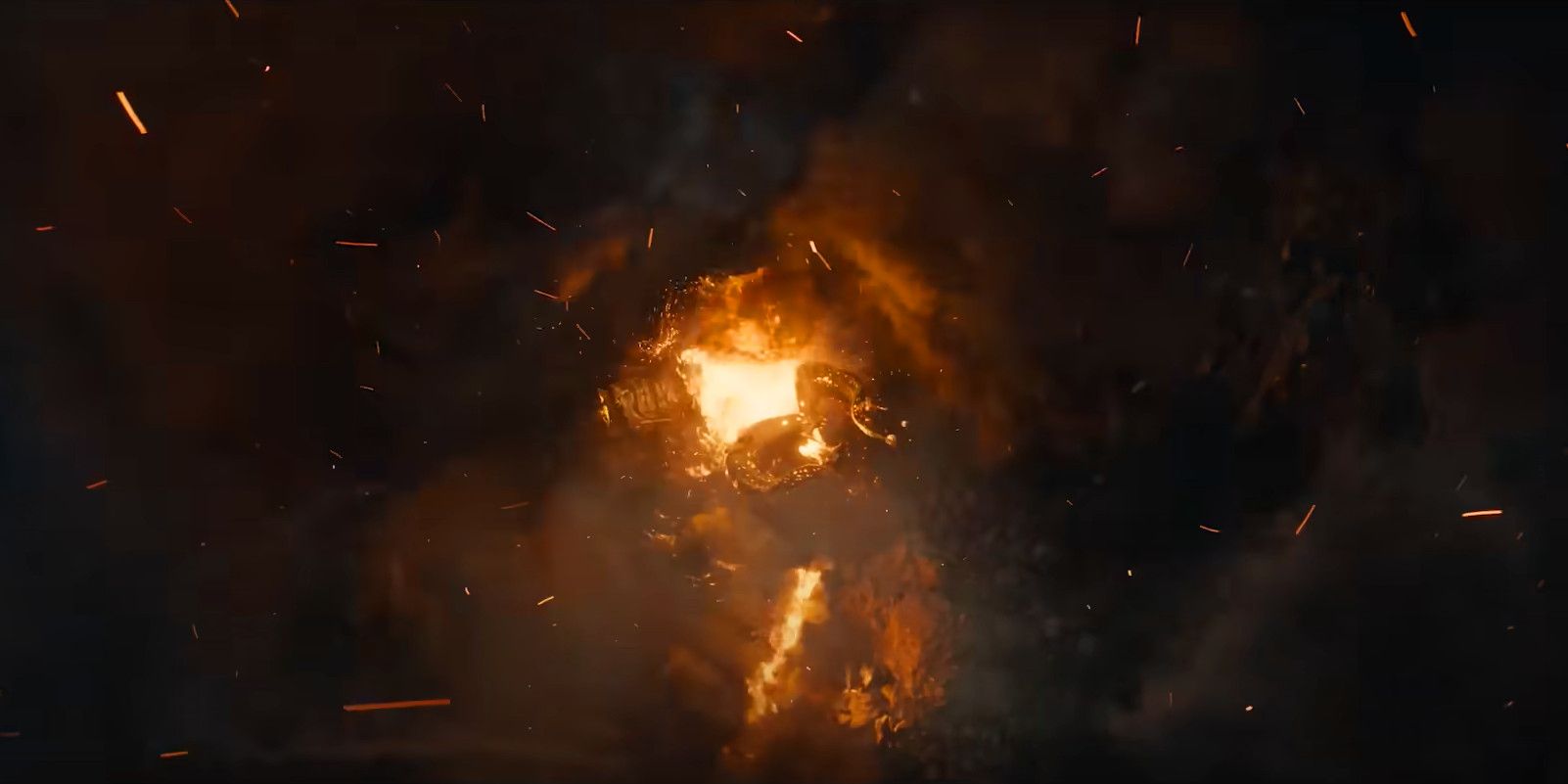
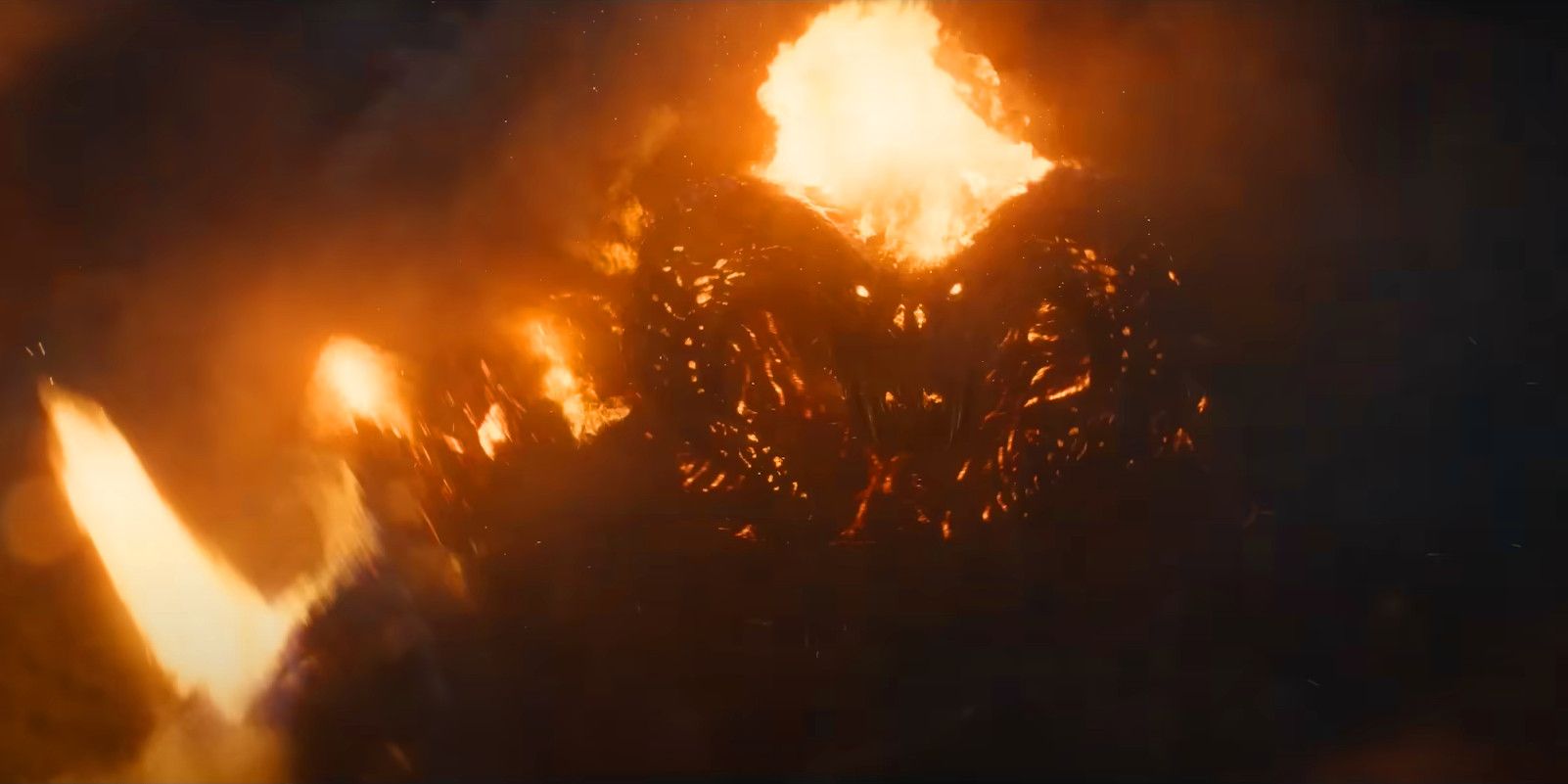




In Jackson’s films, the Balrog possessed batlike wings. They were made of dark, stony flesh and covered in fire, just like the rest of the Balrog’s body. The Balrog in The Rings of Power looked very similar to Jackson’s version, which is certainly intentional, as Tolkien’s description of the Balrog from the novel was rather vague: “It was like a great shadow, in the middle of which was a dark form, of man-shape maybe, yet greater… Its streaming mane kindled, and blazed behind it.” However, there were some differences between the two depictions. The film’ Balrog had simple, single-curved horns like those of a bull, while the series Balrog had horns that bent in on themselves before curving back outward. Additionally, the film’ Balrog had round eyes, while the series Balrog had angular eyes.
Yet the biggest difference had to do with the Balrog’s wings, which were shown off in the Season 2 finale of The Rings of Power. Though shaped like bat wings, they were not made of stony flesh or covered in fire. Instead, they were black and nebulous, resembling clouds of smoke. Its wings were made of pure shadow, which was a perfect interpretation of Tolkien’s description from the novel. This is not strictly better or worse than Jackson’s version, as accuracy to the source material is just one of several factors that must go into an adaptation, but it shows that The Rings of Power‘s artists respect Tolkien’s text. Accurate as the appearance of the Balrog’s wings was, the monster’s lore in The Rings of Power was very different from the novel, and the events that unfolded in the finale set up for even greater differences to occur in the future of the series.
The Rings of Power Shifted the Timeline of the Balrog
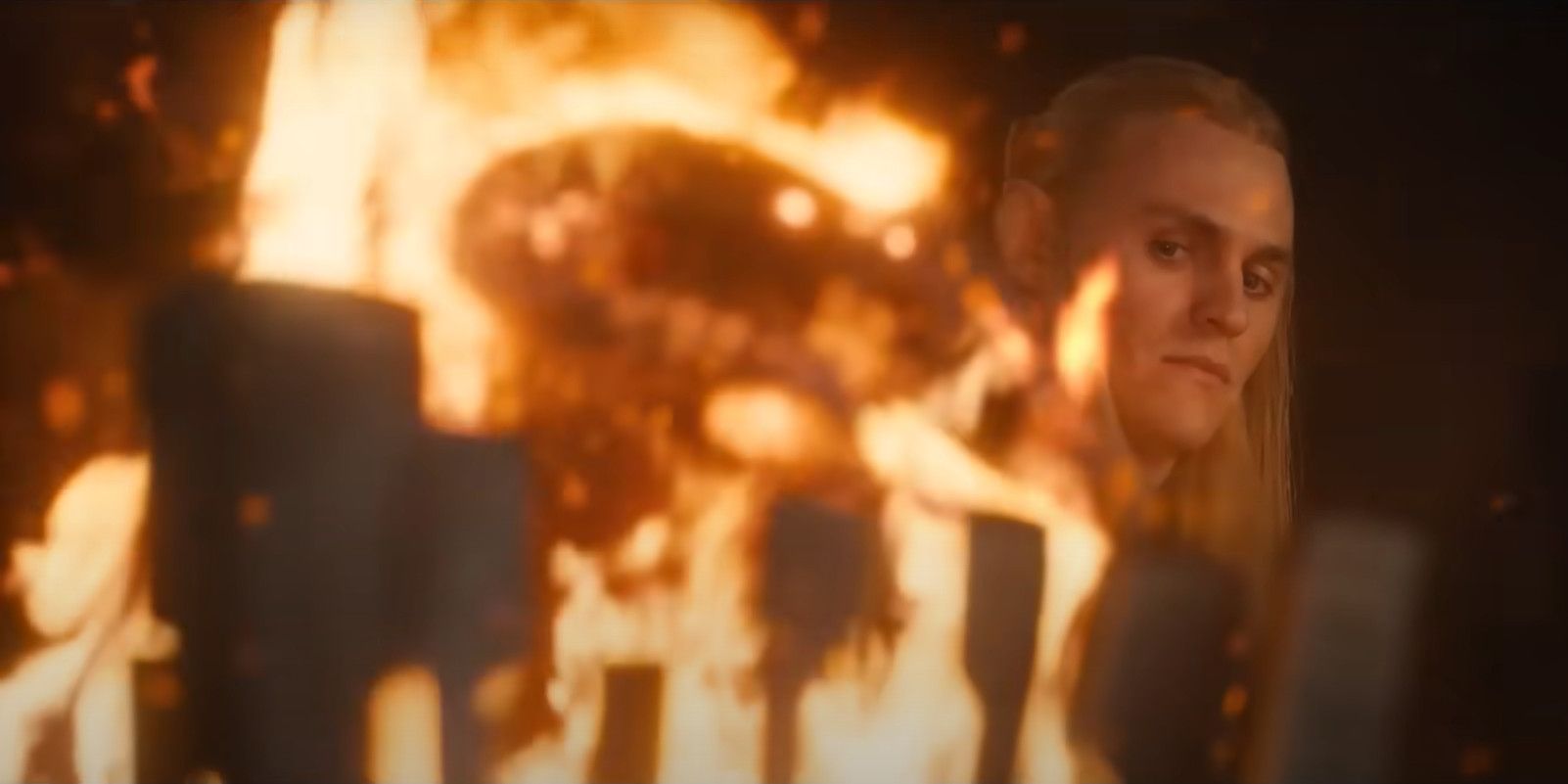
In the novel, the Balrog beneath Moria awoke in the year 1980 of the Third Age, a little over a thousand years before the events of The Lord of the Rings. This was during the reign of King Durin VI. As Gandalf stated in the chapter “A Journey in the Dark” from The Fellowship of the Ring, the Dwarves “delved too greedily and too deep” in search of mithril, waking the Balrog from its slumber. It laid waste to Moria, killing both Durin VI and his son, Náin, along with countless other Dwarves. For this, it earned the name Durin’s Bane. The Balrog would remain in Moria until Gandalf defeated it in The Lord of the Rings, and there would not be another King Durin until well into the Fourth Age.
The Rings of Power takes place at a vague point in the Second Age, during the reign of Durin III. This means that the series’ Balrog awoke over 2,000 years — and three King Durins — earlier than in the novel. Even given The Rings of Power‘s condensed timeline, this is a major deviation from Tolkien’s established lore. Of course, this is not new information. Fans have known that The Rings of Power‘s Balrog awoke early ever since the teaser in the first season. However, most assumed that the series would simply move the downfall of Moria backward in time to the Second Age so that it could fall within The Rings of Power‘s timeframe, which the Season 2 finale revealed is not the case. Rather, the Balrog’s awakening was only temporary.
The Rings of Power’s Balrog Was Defeated, But Not Forever
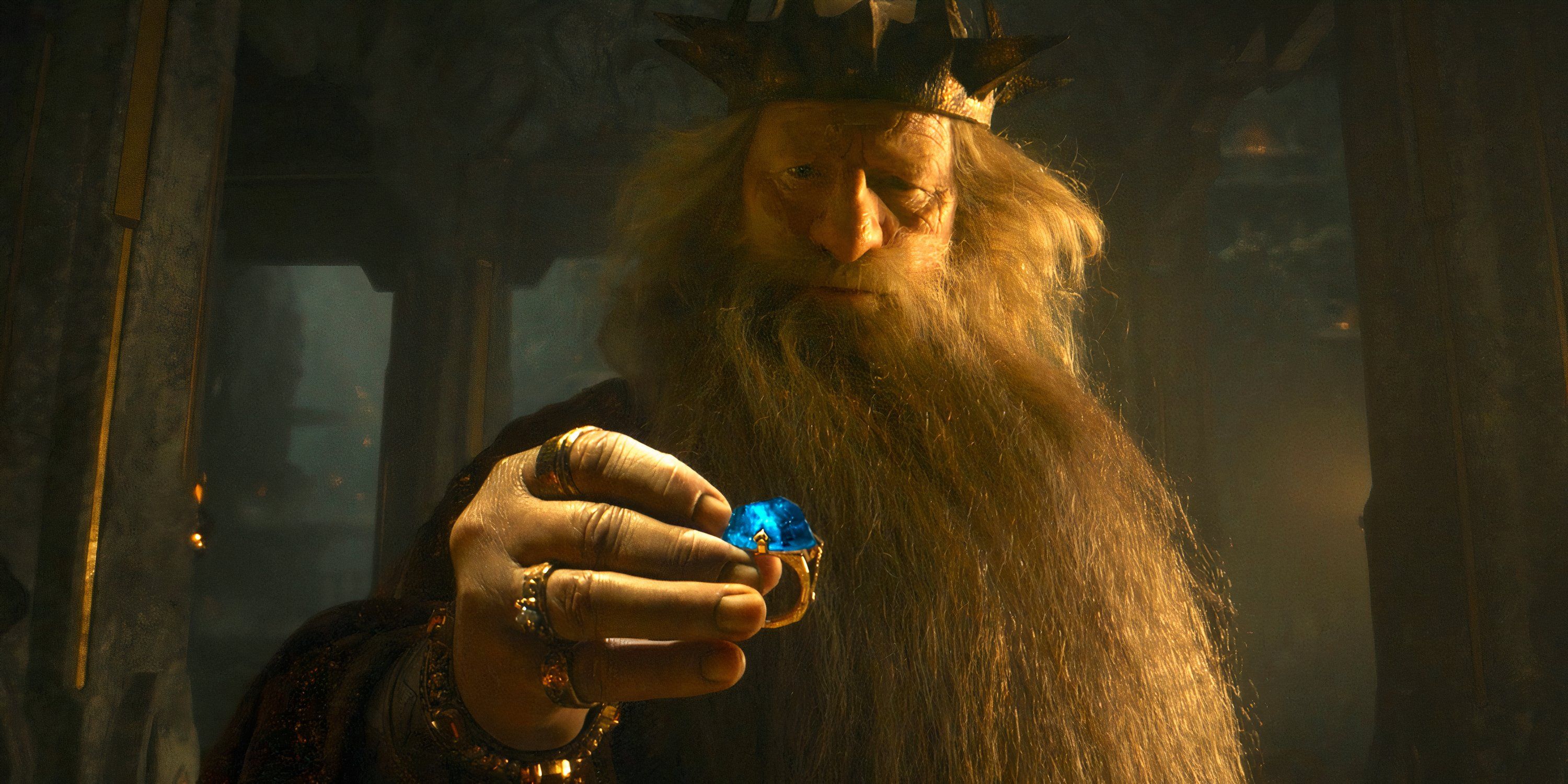
When the Balrog attacked in The Rings of Power, Durin III experienced a moment of clarity. He realized the devastation that it could wreak on his kingdom if it was set free. So, leaving both his Ring of Power and the kingship of Moria to his son, he sacrificed himself to stave off the Balrog. When the Balrog struck at him with its flaming blade, there was an explosion that collapsed a section of the mine and trapped the Balrog behind a wall of rubble once again. Though Moria is safe for the time being, the Balrog is still there, and the downfall of Moria is yet to come. This lore change will have a lasting effect, as it means that the Dwarves will be aware of the Balrog when it is next unleashed. This was not the case in the novel; the Dwarves had no idea that there was a monster beneath Moria, much less that it was a Balrog until it was too late. This raises the question of why the Dwarves will continue to dig into The Rings of Power‘s version of events. After all, at least four Dwarves witnessed Durin III’s demise and know what the Balrog is capable of.
There are three main possibilities. First, the Dwarves might falsely believe that the Balrog is dead. Fans of The Lord of the Rings know that it takes far more than some stones to vanquish a Balrog, but the Dwarves might assume it was simply a large beast that could die by such ordinary means. Second, the Dwarves might forget about the Balrog. 2,000 years is enough time for events to fall into legend, so by the reign of Durin VI, perhaps the Dwarves will believe that the Balrog is nothing more than an ancient myth. Third, the Dwarves simply might not care. They have already dealt with the Balrog once, so they might foolishly believe they could do so again. This would drive home the corruptive nature of the Dwarven Rings of Power, which has been more severe in the series than in the novel. The Dwarves might be well aware that mining will bring about certain doom but keep going anyway because they are unable to help themselves. There is also a possibility that The Rings of Power will completely ignore the Balrog in the future. The series is said to cover the Second Age, but the fall of Moria happens about halfway through the Third Age, long after Sauron’s defeat in the War of the Last Alliance.
News
What Was With The Blood In The Diplomat Season 2?
One scene in The Diplomat season 2, episode 5 offhandedly mentions blood after Grace Penn’s arrival at Winfield House, covering a real-life practice of the Secret Service. The Diplomat starting with the attack against HMS Courageous meant the President and Vice President of the US both…
Why Kate Is Ready To Take The VP Position In The Diplomat Season 2 Ending Thoughtfully Detailed By Creator & Star
The Diplomat creator Debora Cahn and star Keri Russell have thoughtfully detailed why Kate is ready to take the Vice President position by the end of season 2. The Diplomat season 2 focused on Kate (Russell) trying to uncover who within the UK government…
Who Merritt Grove Is In The Diplomat & What He Wants
The Diplomat season 1 finale left viewers with uncertainty about who Merritt Grove is and what he wanted. Grove appeared halfway through the finale and only had brief on-screen appearances before an explosive closing scene. Grove was confirmed to be a former…
“That Final Scene!”: Stephen King Shares High Praise For Netflix Thriller
Stephen King shares praise for one of Netflix’s leading thrillers, particularly citing the show’s final scene. Netflix has assembled a few strong political dramas, which varyingly incroporate thrills. The Night Agent, one of Netflix’s biggest series, is a pure action thriller led…
The Diplomat Season 2 Completely Ignores A Massive Hal Wyler Twist From Season 1
The Diplomat season 1 introduced a huge storyline for Rufus Sewell’s Hal Wyler, but the latest run of the Netflix political drama makes absolutely no mention of the pivotal twist. By the end of The Diplomat season 2, Hal has apparently completely moved on from…
The Diplomat Season 2 Finale’s Huge Twist Was Foreshadowed Over 1 Year Ago And You Didn’t Notice It
The Diplomat season 2 finale had a very dramatic ending, and while some of it would have been almost impossible to predict, one moment was quietly teased in the Netflix political drama’s first outing back in 2023. The massive twist in The…
End of content
No more pages to load



